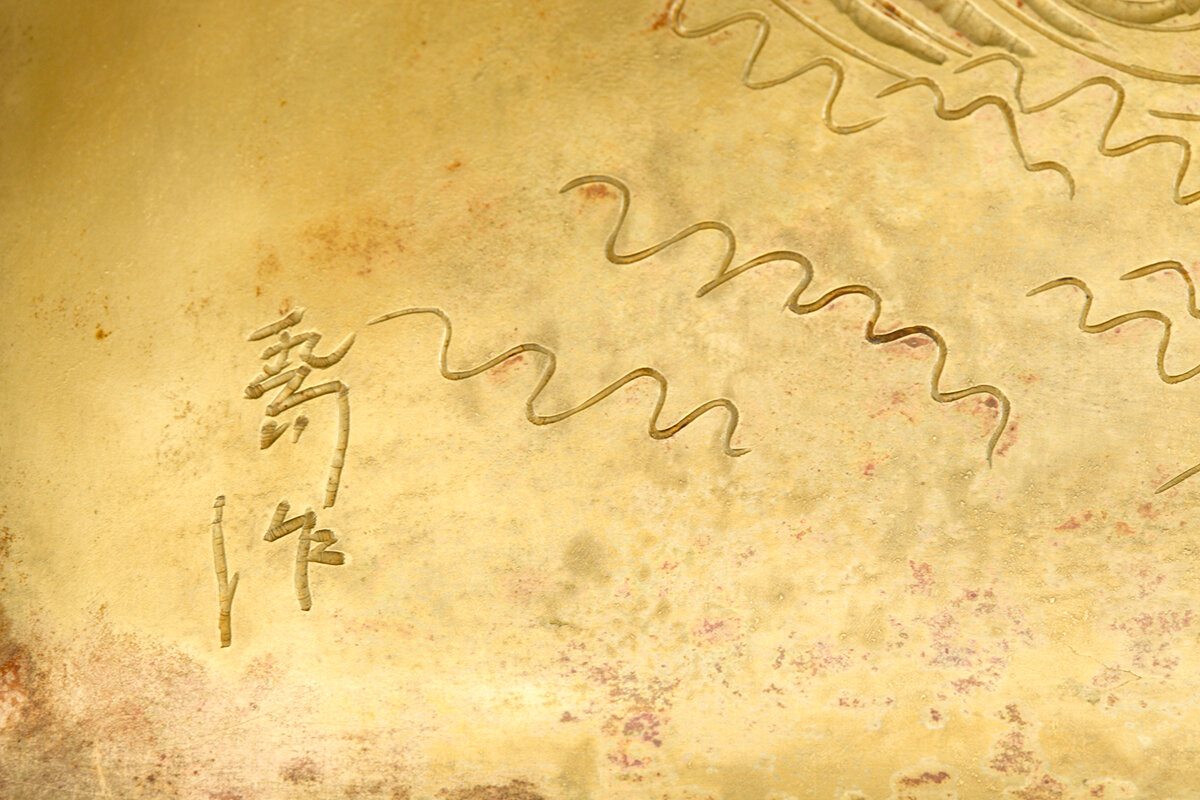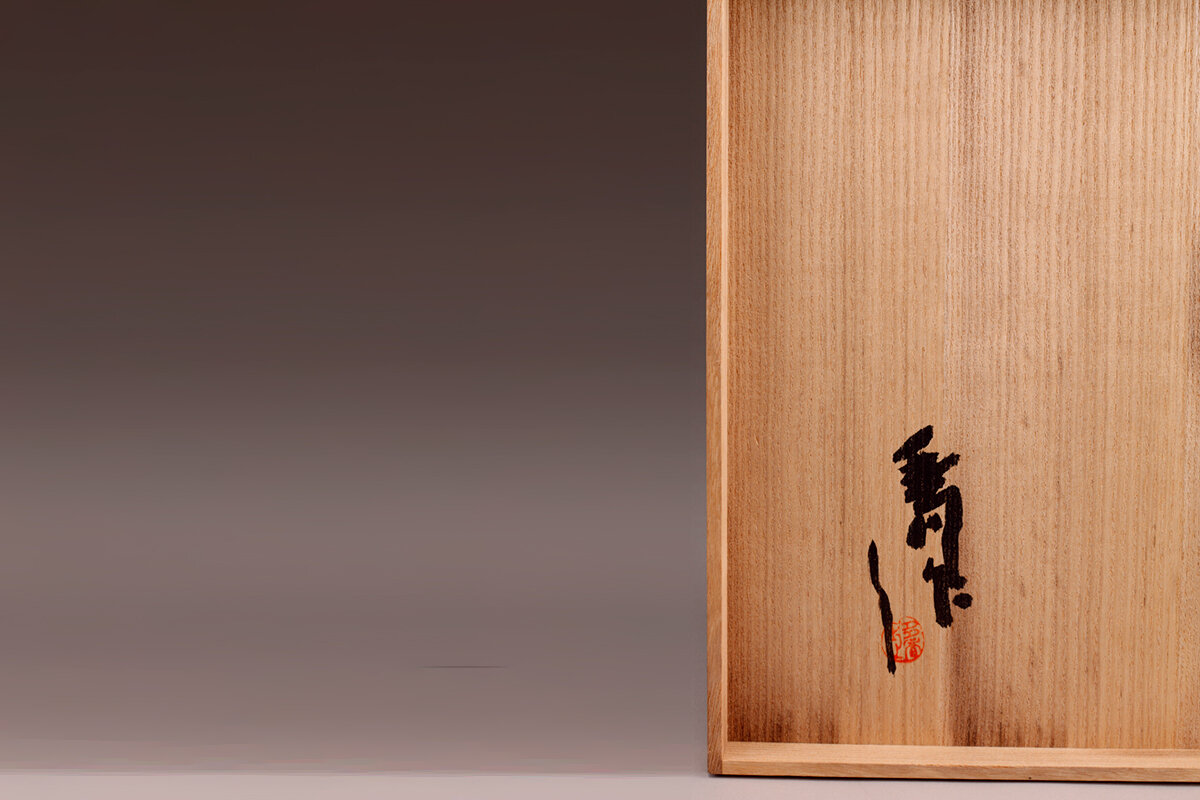POST-WAR & CONTEMPORARY
OSUGA TAKASHI ORNAMENTAL BOX WITH DESIGNS OF A CATFISH, WATERWEEDS & CRAB
Kazari-bako or ornamental box decorated on the lid and sides with an under-water design of a catfish, water weeds and a crab. Of chestnut wood with a clear lacquer finish, inlaid on the top and sides with shakudo panels cold-chiseled in katakiri-bori technique, with extensive gilding, intentionally rubbed by the artist to achieve a clouding effect as if looking through water partly shadowed and partly glowing with sunlight. Signed on the lower left corner of the lid with a chiseled signature by the artist: Osuga Saku or Made by Osuga (Osuga Takashi, 1901 – 1987). Showa era, circa 1960 – 1964.
With a double tomobako, the exterior box lacquered, inscribed on the exterior of the inner box lid: Kinsai Sakana no Kazari-Bako or Finely Made Fish (Motif) Ornamental Box; and on the reverse of this lid signed: Osuga Saku or Made by Osuga, and sealed.
Osuga Takashi graduated from the Tokyo School of Fine Art in 1925 and then with Kitahara Senroku and others helped found the Kojinsha association of modernist metal artists. He began exhibiting at the government-sponsored art exhibitions with the Teiten in 1929, and later the reorganized Shin-Bunten. After the Pacific War he showed at the Nitten, winning the Nihon Geijutsuin (Japan Art Academy) Prize in 1958.
For another example of his work, c.f. Selected Masterpieces from the University Art Museum, Tokyo National University of Fine Arts and Music: Grand Opening Exhibition, pages 194 – 195, number 81; see also Kagedo’s catalogue, Yukei, number 159; as well as Kagedo’s 2010 Catalogue, number 71.
Often, Osuga Takashi sought inspiration in the natural world of insects and plants. Magnified and abstracted, these become central design elements in his traditionally hammered and inlaid or gilt metalwork. Here he carved a black shakudo plaque in katakiribori chiseling technique and then gilded the carving to highlight the motif. The background gilding he applied and polished to cloud-like effect. This modernist treatment of the ground was probably inspired by Negoro lacquers, and was first employed by Sasaki Shodo in the 1920s.
Osuga Takashi Ornamental Box with Designs of a Catfish, Waterweeds & Crab
Artist Name: Osuga Takashi
Period: Showa Post War
Mediums: Wood
Form: Ornamental Boxes
Origin Country: Japan
2 ¾” high x 13” long x 11 3/8” wide
This piece is no longer available.






